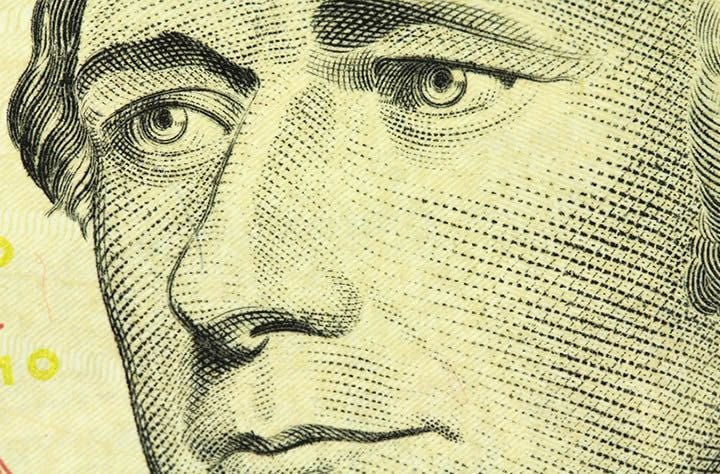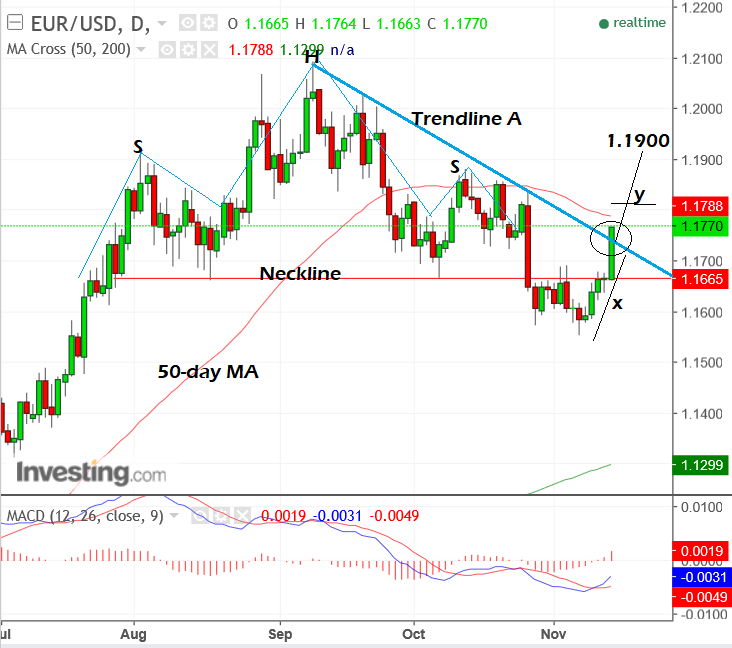Euro-to-US Dollar Resumes its Uptrend, Next Stop 1.1900

The Euro-to-US Dollar has risen above a key level distinguishing the downtrend from the uptrend, and we are now bullish, which means we expect the exchange rate to go higher.
The exchange rate has risen to above the key 1.1760 level and broken above an important trendline (trendline A on the chart below) connecting the September highs and the October highs, which now negates the possibility that the market was in the process of topping.
We had thought that the pair might be forming a head and shoulders topping pattern between August and October of this year but this is probably not the case now after the break above Trendline A, and to reflect this we have now changed our stance to bullish. 
The break above the trendline (circled) is a significant turning point for the pair and we now expect it to rise the same distance as the move immediately prior to the break, the length of which I have highlighted on the chart and labeled 'x'.
The final destination for the follow-through after the break is likely to be equal to the length of 'x' extrapolated higher, according to technical lore.
Our expectation based on 'x' is represented on the chart as a black line labeled 'y' and is slightly above 1.1900, but we have chosen 1.1900 as a target because it is a marginally more achievable, convenient round-number.
An obvious obstacle to progress higher is the 50-day moving average situated at 1.1788, which is likely to act as an obstacle to further gains - although we expect it to be overcome eventually.
This is due to increased numbers of traders at the level of the 50-day selling into the uptrend in anticipation of a pull-back as this is often what happens when rates reach the level of the MA.
A break clearly above the 50-day, however, confirmed by a move above the 1.1815 level, would be expected to extend higher and reach the 1.1900 target.
We expect a break above the 50-day eventually anyway given the rally already.
Get up to 5% more foreign exchange by using a specialist provider by getting closer to the real market rate and avoid the gaping spreads charged by your bank for international payments. Learn more here.
